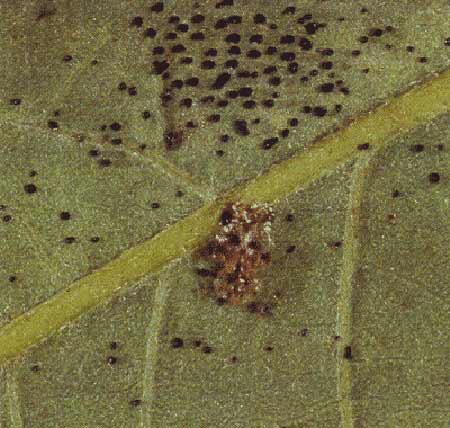Lacebugs
There are many species of lacebugs which feed on trees and shrubs, but each species typically only infests one type of plant. Plant damage occurs during the spring and summer. Damaged vegetation will have a speckled or mottled yellow or grayish appearance, similar to the damage caused by mites, but the underside of the leaf will have hard, shiny black egg vaults firmly attached (pictured.) The mottling is caused by the adult and immature insects sucking the sap from the underside of the leaves, depleting the green pigment from the leaves. Affected plants will usually be stunted.
The adult lacebug is a brownish insect with clear, lacy wings. Immature lacebugs are dark, spiny and wingless. Adult insects overwinter in protected areas of the plant. Eggs overwinter in the egg vaults, or in leaf veins.
Treatment for lacbugs requires multiple spray applications of an insecticide specific to the affected plant. Treatment is best done by licensed applicators or professional arborists.








